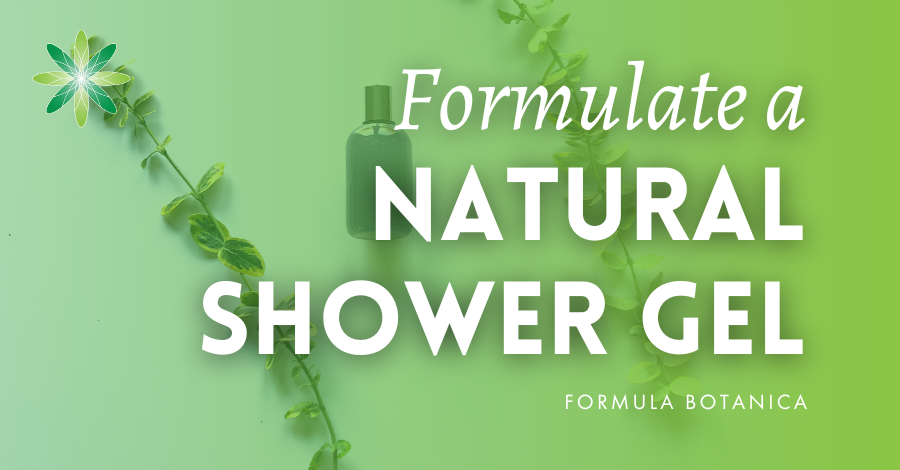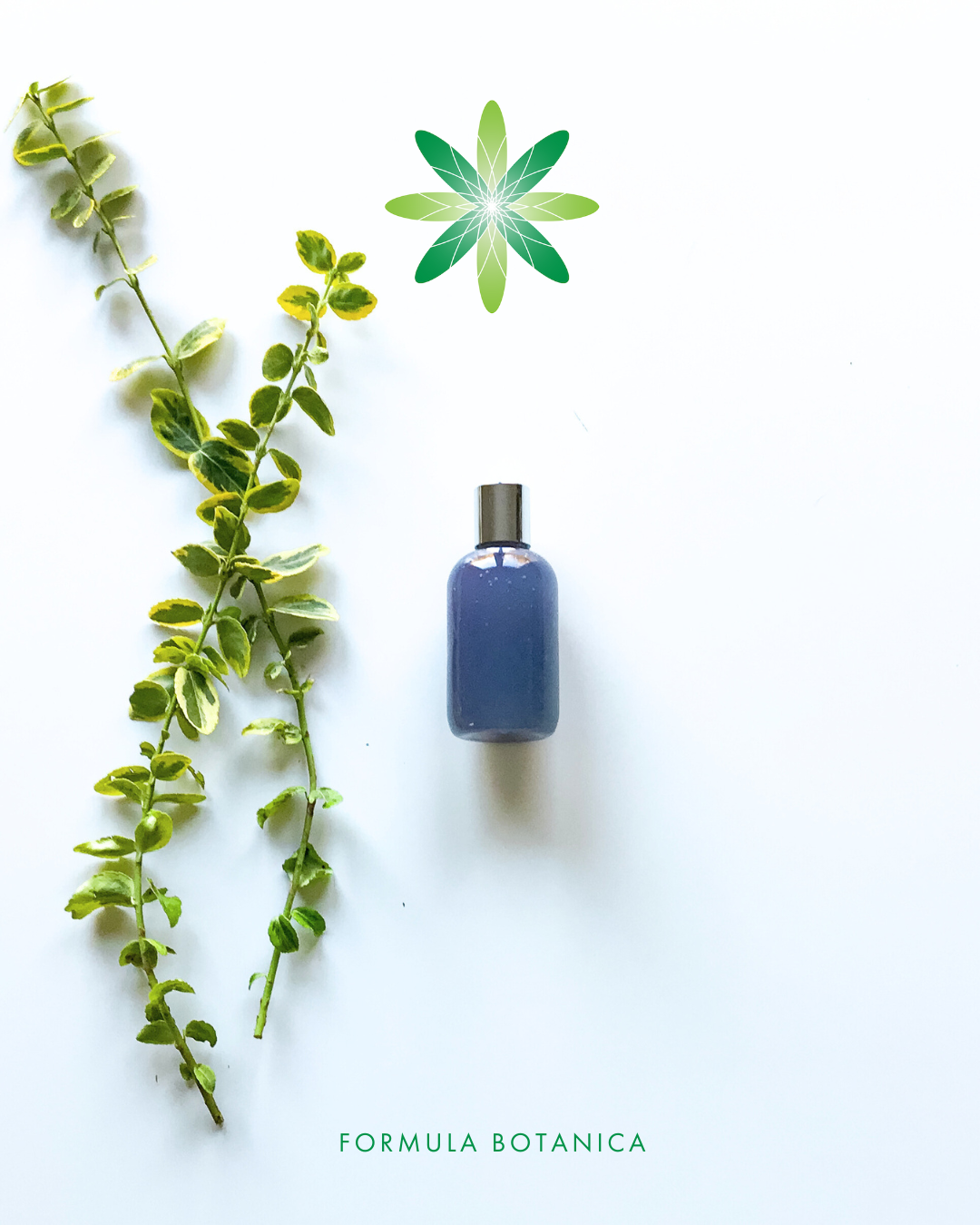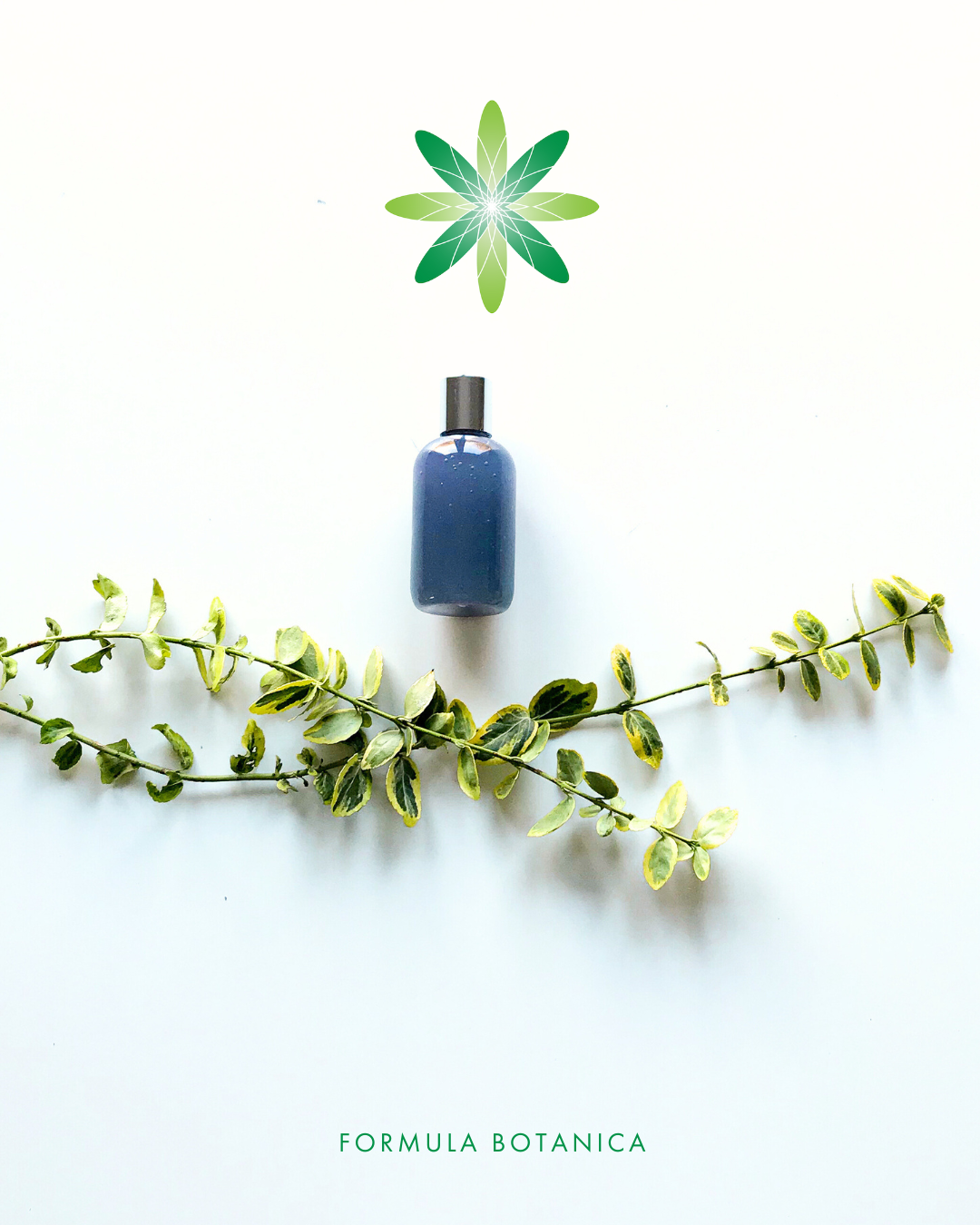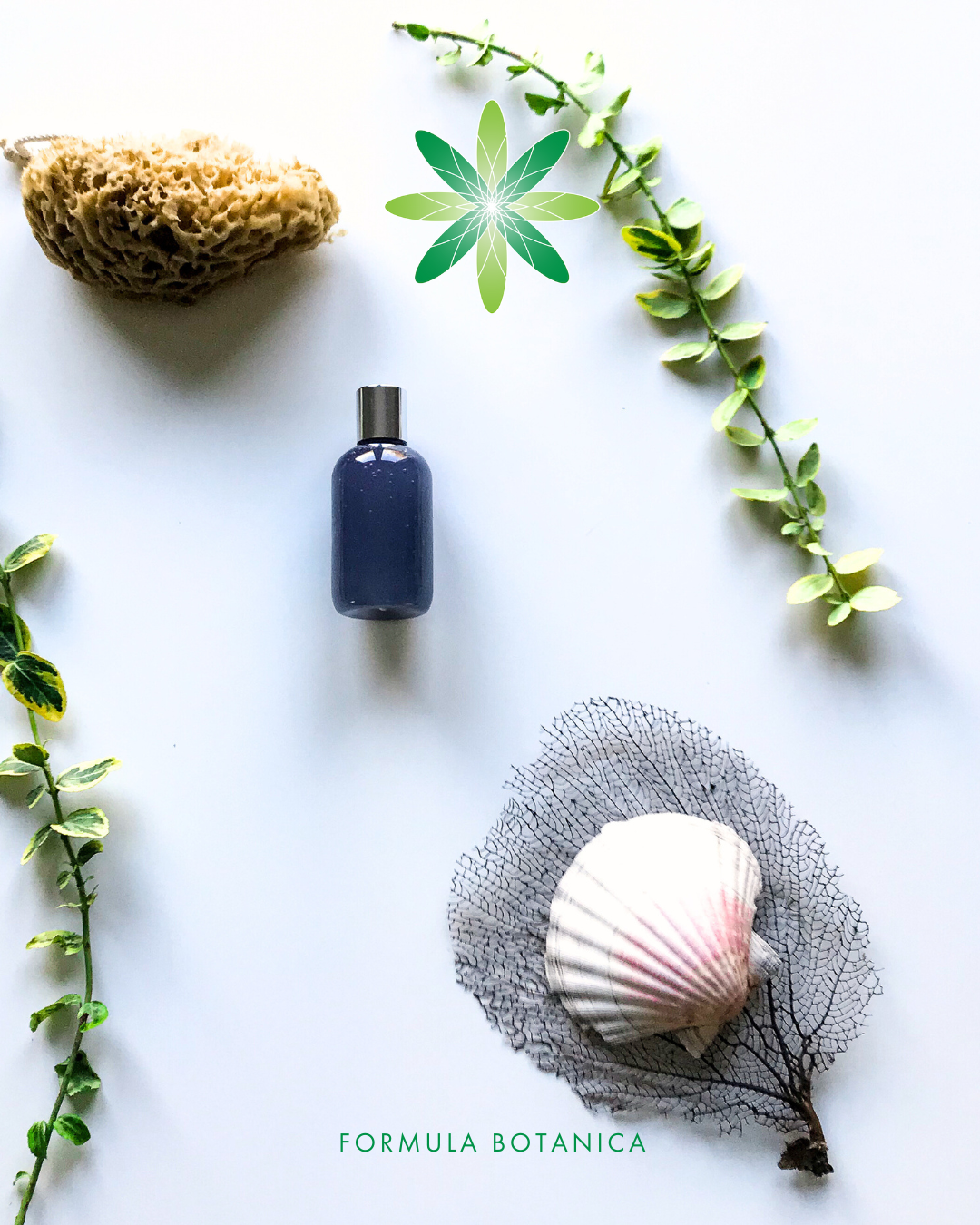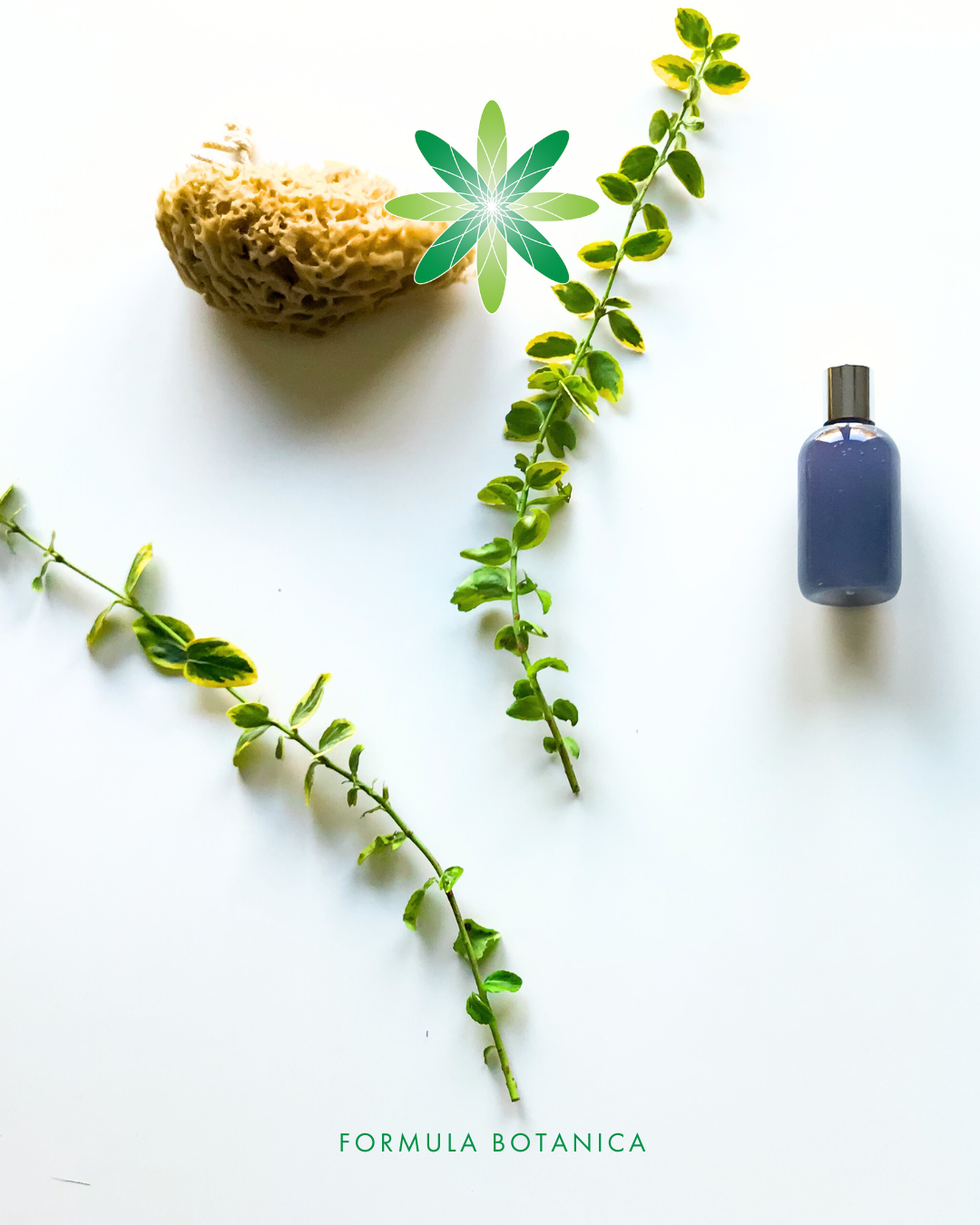Updated: 31.12.24
Imagine starting your day with a refreshing shower gel that cleanses and invigorates your senses. Now, imagine making this shower gel yourself, right at home, using natural ingredients. It’s not a dream—it’s a reality you can create!
At Formula Botanica, the world’s leading formulation school, we’re on a mission to teach the world how to formulate. And today, we want to teach you how to make a natural shower gel, using blue spirulina extract and grapefruit essential oil.
Whether you’re a beginner or a seasoned formulator, this shower gel is a must-try. The formula is endlessly customisable. You can swap out colours, play with different scents, and tailor the ingredients to meet your skin’s unique needs. Ready to transform your shower experience? Let’s dive right in!
What is a shower gel?
A shower gel is a liquid body cleanser designed for shower use. It typically has a gel-like consistency, lathers when applied, and cleanses the skin while providing a refreshing, invigorating experience.
Shower gels often contain a combination of water, botanical extracts and other nourishing ingredients. They might also contain fragrance to enhance the sensory experience. Unlike traditional soaps, shower gels are often gentler and more moisturising, making them a popular choice for daily use.
What makes a good shower gel?
A good shower gel effectively cleanses the skin while providing a pleasant sensory experience. It typically includes surfactants, which are key ingredients that help the product lather and remove dirt and oils. Surfactants are a vast group of cosmetic ingredients that include emulsifiers and solubilisers. Find out more about surfactants below:
Solubiliser vs emulsifier: which one do you need in your formulations?
Given that shower gels are a staple in your daily routine, it’s vital to choose ingredients that are both gentle and nourishing. The surfactants you select should cleanse without stripping away moisture, leaving your skin soft and comfortable instead of dry and tight. Learn more about working with surfactants in this post:
While not all surfactants produce foam, a good shower gel doesn’t necessarily need to lather to be effective—consider cream-based cleansers, which offer a different but equally satisfying experience. However, since many people associate lather with cleanliness, formulating a shower gel that foams gently, paired with natural ingredients, vibrant colours, and refreshing scents, can significantly enhance your daily shower ritual.
How to make a natural shower gel
1. Create your foundation
Creating a natural shower gel starts with the basics: water or hydrosols, surfactants, a preservative, and a gum. These essential ingredients, blended in the right proportions, form the foundation of a luxurious shower gel that delivers a rich lather and effective cleansing.
The key to an indulgent shower gel is perfecting the texture. Achieving that smooth, gel-like consistency can be challenging, but when done right, the result is a silky, stable product that glides effortlessly across the skin. Avoiding excessive bubbles and clumpy textures is crucial, but don’t worry—we’ve already perfected a formula that’s smooth, stable, and incredibly luxurious. Keep reading to find out more.
2. Choose your gums
When working with natural surfactants, you’ll need gums or gum blends to achieve the desired viscosity, as opposed to using salt. Gums can be tricky—they can clump or create odd textures if not used correctly. Learn more about gums below:
After experimenting with different combinations, we found that a 50:50 blend of sclerotium gum and clear xanthan gum creates a beautiful, clear gel with a soft, smooth texture. This blend, when properly hydrated, delivers excellent stability and feels luxurious on the skin. You can also experiment with other gums like guar gum, but be prepared to adjust the ratios to suit your formulation.
3. Add surfactants
Creating a well-balanced surfactant blend is the next step. Surfactants work best in combination, where they complement each other’s strengths. While using a single non-ionic surfactant is a great starting point, combining surfactants will elevate your formula to a more rounded and effective level.
For a stronger cleansing effect, consider incorporating an anionic surfactant. Amphoteric surfactants, which carry both positive and negative charges, boost foam stability, while non-ionic surfactants create a gentler formula and soften harsher ones. No need to worry if it seems a bit overwhelming now—we cover all of this step by step in our Diploma in Organic Skincare Formulation.
For this shower gel, we use a combination of two non-ionic surfactants—Caprylyl/Capryl glucoside and Decyl glucoside—along with Cocamidopropyl betaine, an amphoteric surfactant. This mild blend produces a rich lather and gently cleanses the skin. Caprylyl/Capryl Glucoside also serves as an effective solubiliser, ensuring your oil-based ingredients disperse evenly throughout the gel.
4. Add your actives
Once you’ve perfected your base formula, you can then customise it! Add different botanicals to create different scents, colours, and sensations. Botanical extracts, essential oils, and even glycerites can add delightful fragrances and beneficial properties to your gel. Here are some fun colourful extracts you can experiment with:
Since shower gels are rinse-off products, there’s no need to invest in expensive extracts that won’t have enough time to work their magic. Instead, focus on optimising your surfactant phase for performance. Save your precious extracts for leave-on products like lotions or body butters where they can truly shine.
Our formulation: Spirulina & grapefruit shower gel
Now that you’re ready to formulate your own shower gel, it’s time to gather your ingredients! Pull together everything you need from your formulation stash, or order any missing items from the trusted suppliers listed at the bottom of this post. Let the fun begin!
Makes: 100g
Formulation: Cold-process
Level: Beginner-friendly
| Phase | Ingredients | INCI | Weight (g) |
| A | Vegetable glycerine | Glycerin | 10.00 |
| A | Sclerotium gum | Sclerotium Gum | 1.00 |
| A | Xanthan gum | Xanthan Gum | 1.00 |
| B | Caprylyl/capryl glucoside | Caprylyl/Capryl Glucoside | 15.00 |
| B | Cocamidopropyl betaine | Cocamidopropyl Betaine | 10.00 |
| B | Decyl glucoside | Decyl glucoside | 3.00 |
| B | Grapefruit essential oil | Citrus Paradisi Peel Oil | 1.00 |
| C | Distilled water | Aqua | 42.90 |
| C | Orange hydrosol | Citrus Aurantium Amara Flower Water | 10.00 |
| C | Aloe vera juice | Aloe Barbadensis Leaf Juice, Potassium Sorbate, Sodium Benzoate, Citric Acid | 5.00 |
| C | Blue spirulina powder | Spirulina Platensis Extract | 0.10 |
| D | Preservative eco | Benzyl Alcohol, Salicylic Acid, Glycerin, Sorbic Acid | 1.00 |
| Total: 100.00 |
Important note:
Always make sure to consult the International Fragrance Association (IFRA) Standards Library for guidelines on usage percentages and any restrictions related to essential oils in your cosmetic formulations. We also cover dermal limits in our Diploma in Organic Skincare Formulation.
Our formulation: Spirulina & grapefruit natural shower gel
Formulation method:
To make this uplifting spirulina & grapefruit shower gel, follow our easy step-by-step instructions.
Step 1: Prepare your workspace
Before you start formulating, ensure your workspace and utensils are thoroughly sanitised, and wear your personal protective equipment—gloves, apron, and any other necessary gear. It’s crucial to follow Good Manufacturing Practice (GMP) throughout the process.
Step 2: Weigh the glycerine and gums
Weigh your glycerine, sclerotium gum and xanthan gum in a beaker. Use a glass rod to combine them. Set the mixture aside, allowing the gums to fully disperse in the glycerine. This step is crucial for achieving a smooth texture and preventing any clumping later on.
Step 3: Weigh the surfactants and essential oil
In a separate beaker, blend all the surfactants together- caprylyl/capryl glucoside, cocamidopropyl betaine and decyl glucoside. Add the grapefruit essential oil and stir slowly with a glass rod until there are no streaks in the liquid and wait for it to turn translucent.
Step 4: Weigh the water, hydrosol, aloe vera and blue spirulina
In another beaker, blend your water, orange hydrosol and aloe vera juice. Add the blue spirulina extract and let it dissolve fully.
Step 5: Add the surfactant mixture to the spirulina blend
Carefully add your surfactant mixture to your blue spirulina mixture and blend them together. Gradually incorporate the surfactants stirring slowly until the mixture is fully combined. Take care not to stir too quickly, as this could cause unwanted foaming. As the surfactants mix in, you’ll notice the colour shift to purple due to the pH—this is completely normal and part of the process.
Step 6: Add the gums to the blend
Next, add your gum mixture to your overall blend. Slowly combine the water with the gum/glycerine mix bit by bit and stir very slowly. Leave the ingredients to thicken slightly at this point.
Step 7: Check and adjust the pH
Next, check and adjust your formulation’s pH. You are aiming for the blend to reach a pH of 5 to 5.5. Adjusting the pH will make the blend blue again. Also keep in mind that preservative eco will lower the pH slightly. Stir gently until the blend returns to a consistent, vibrant blue.
Step 8: Add the preservative
Add preservative eco to your blend and stir until fully dissolved.
Step 9: Re-check the pH
Check and adjust the pH as necessary. We are looking for a pH of 5 in your overall blend. We teach you all about pH measurements and adjustments in our Diploma in Organic Skincare Formulation.
Step 10: Bottle & label
Pour the gel into a bottle and allow it to rest for 24 hours. This waiting period is essential for the gel to fully set, achieve its final consistency, and clear out any bubbles, leaving you with a smooth, bubble-free product.
FAQ
What is the difference between a shower gel, body wash and body cream cleanser?
The key difference between a shower gel and a body wash lies in the texture and viscosity of the two products. A gel is thicker, and often translucent or semi-opaque, while a wash is more like a liquid soap and runnier. A body cream cleanser is an emulsion-based, wash-off cleanser that leaves the skin more moisturised.
What is a surfactant?
A surfactant, or surface-active agent, is a group of cosmetic ingredients that aid with foaming, soaping and cleansing. Surfactants cover a wide range of ingredients which includes emulsifiers, solubilisers, dispersants and wetting agents. Surfactants are routinely found in household detergents and personal care products like liquid soaps, shampoos and shower gels.
What natural surfactants are there?
Common plant-based surfactants used in natural, green cosmetic formulations include Coco glucoside, Decyl glucoside and Caprylyl/Capryl glucoside which are various derivatives of glucose (sugar/starch) and fatty alcohols from coconut or palm oil.
Suggested suppliers
Below is a list of several suppliers who stock some of the ingredients used in our natural organic shower gel formulation. Once you enrol with Formula Botanica, you will receive our comprehensive global supplier list.
EU & UK
Caprylyl/Capryl glucoside: Naturally Thinking
Decyl glucoside: The Soap Kitchen/Alexmo Cosmetics
Cocamidopropyl betaine: The Soap Kitchen/Manske Shop
Blue spirulina: Amazon
USA
Caprylyl/Capryl glucoside: Formulator Sample Shop
Decyl glucoside: Ingredients to Die For
Cocamidopropyl betaine: Formulator Sample Shop
Blue spirulina: Ellie’s Best
FREE TRAINING
Learn how to become an
Organic Skincare Formulator
FREE TRAINING
How to become an
Organic Skincare Entrepreneur
FREE TRAINING
How to become an
Organic Skincare Entrepreneur
Leave us a comment

Brooke Medhurst is a Tutor at Formula Botanica. Find out more about the Formula Botanica Team.

